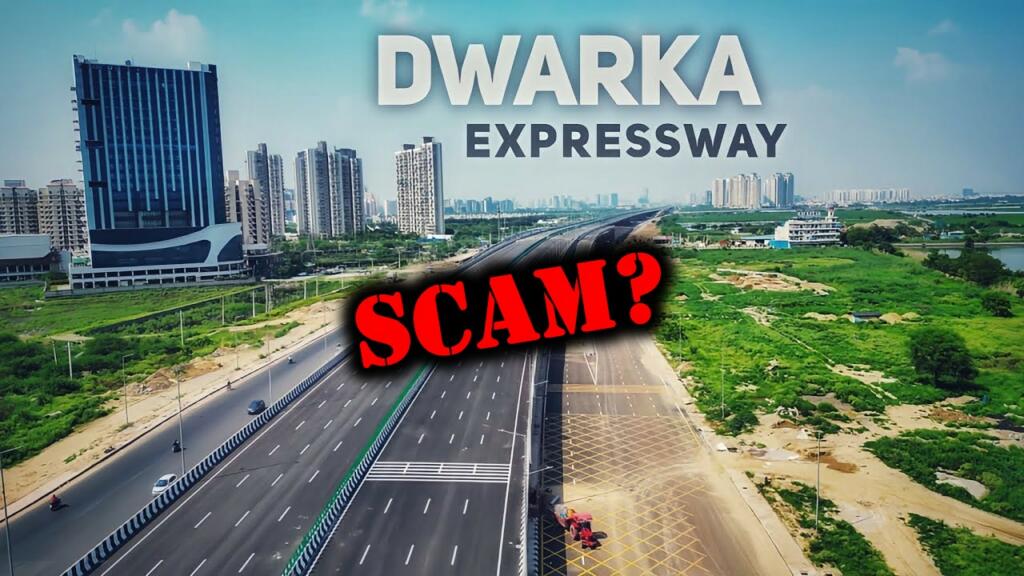In a world where cries of corruption echo at the drop of a hat, it is important to delve beyond sensationalism and explore the truth behind the headlines. This week, the spotlight has fallen on the Dwarka Expressway, a central project that has stirred controversy and raised eyebrows due to alleged cost overruns. The Comptroller and Auditor General of India (CAG) recently tabled a report in Parliament that sheds light on the matter, igniting discussions about the project’s viability and the government’s intentions.
The CAG report highlighted a staggering cost discrepancy that has fueled the skepticism surrounding the Dwarka Expressway. While the Cabinet Committee on Economic Affairs (CCEA) initially sanctioned an average construction cost of ₹18.2 crore per kilometer for projects under the Bharatmala program, the Dwarka Expressway is reportedly being developed at an astounding cost of ₹250.77 crore per kilometer. This glaring disparity raises legitimate concerns and prompts questions about the rationale behind such a significant increase.
Understandably, this prompted swift allegations from opposition voices, with the Aam Aadmi Party (AAP) taking the lead in condemning what they labeled as a meticulously orchestrated scam. AAP’s national spokesperson, Priyanka Kakkar, spearheaded the protest against the elevated expressway project, which aimed to alleviate congestion on National Highway 48 connecting Delhi and Gurugram.
भाजपा वालों, Highway के नाम पर सोने की सड़क बना रहे हो क्या?
एक तरफ़ @ArvindKejriwal सरकार, समय के साथ, निर्धारित से कम बजट में वर्ल्ड-क्लास सड़के बनाती है;
दूसरी तरफ़ चौथी पास राजा की सरकार-जिसका चमत्कारी highway बनाने का खर्चा 14x हो जाता है₹6000 करोड़ किसकी जेब में गया?… pic.twitter.com/qESBG1i0Vq
— Atishi (@AtishiAAP) August 14, 2023
The party seized upon the CAG report’s findings, emphasizing that the project’s cost was nearly fourteen times higher than the initially approved amount. This only added fuel to the fire. However, the truth is quite different.
While the CAG report’s portrayal of the cost escalation from ₹18.2 crore to ₹250.77 crore per kilometer for the 29-kilometer project seems dramatic, a deeper analysis reveals a more balanced perspective. The report, though seemingly explicit in its critique, is somewhat misleading in its framing of the issue.
Also read: I.N.D.I.A. officially ends in Delhi
The crux of the matter lies in the intrinsic differences between the Dwarka Expressway and other roads falling under the ambit of the Bharatmala Project. The CAG’s cost estimation of ₹18.2 crore per kilometer was an overarching average projected by the CCEA. However, it is imperative to note that the Dwarka Expressway isn’t a run-of-the-mill road; it boasts a unique design featuring 14 lanes, with eight lanes elevated and the remaining six lanes at ground level. Such elevation inherently commands a higher cost, as elevated roads entail more complex engineering and construction processes.
The Ministry of Road Transport and Highways of India (MoRTH) swiftly responded to the CAG report, dismissing it as a misrepresentation of facts and challenging the figures cited. MoRTH contends that the approved cost for the Dwarka Expressway is ₹206.39 crore per kilometer, with the awarded civil cost standing at ₹181.94 crore per kilometer. This counter-narrative from the ministry underscores the importance of considering all sides of the story before passing judgment.
Dwarka Expressway is an engineering marvel involving construction of 8-lane on single pier, which has been conceived and designed considering present traffic volume, need for seamless connectivity and to meet requirement of future growth potential of the region. It would also… pic.twitter.com/NJzhDdzBGK
— Amit Malviya (मोदी का परिवार) (@amitmalviya) August 14, 2023
The Dwarka Expressway controversy underscores the need for a nuanced understanding of complex infrastructure projects. While the CAG’s findings have sparked concerns over cost escalations, it is essential to view the issue within the broader context. The project’s unique design, featuring an extensive elevated stretch, inherently entails higher costs that cannot be compared directly to the average cost of grade-level roads. As responsible citizens, our duty lies in understanding the complexities, seeking clarity, and fostering a constructive dialogue that promotes informed decision-making and a better future for our nation’s infrastructure.
Support TFI:
Support us to strengthen the ‘Right’ ideology of cultural nationalism by purchasing the best quality garments from TFI-STORE.COM
